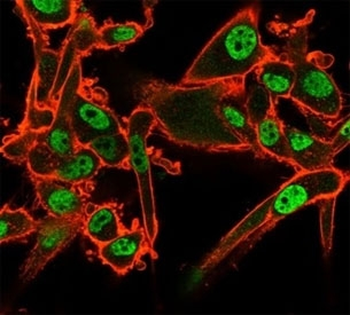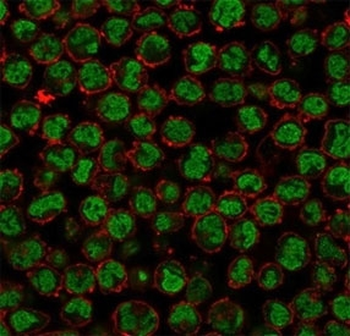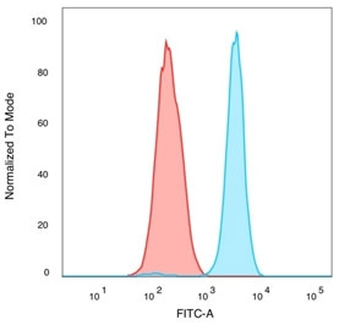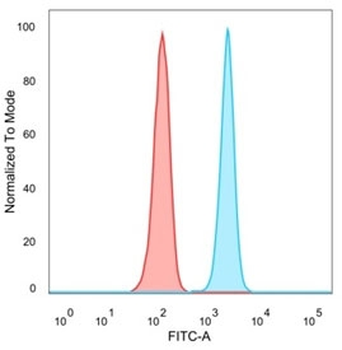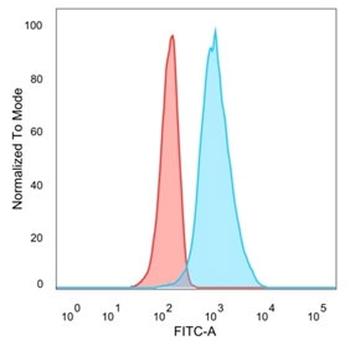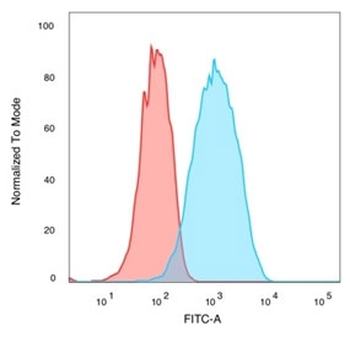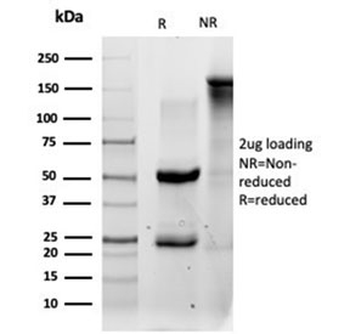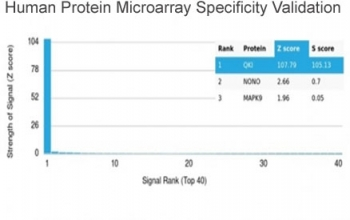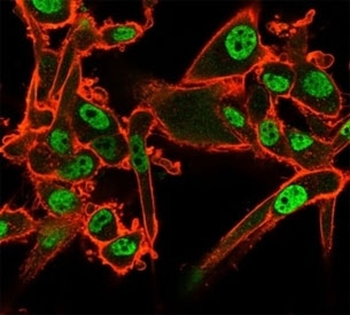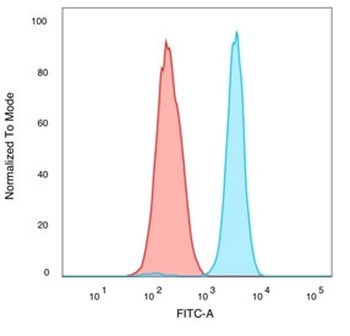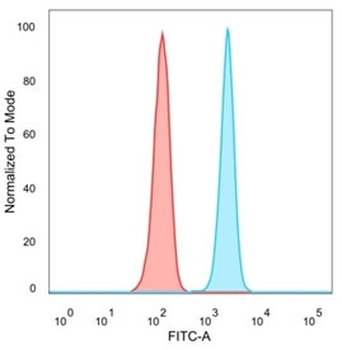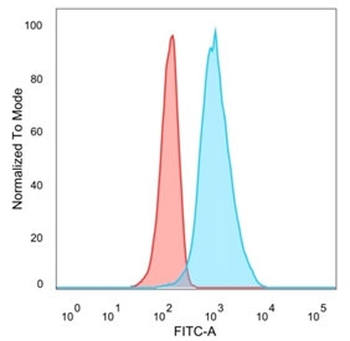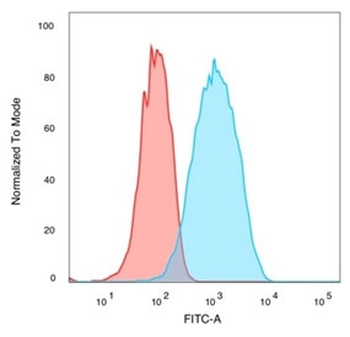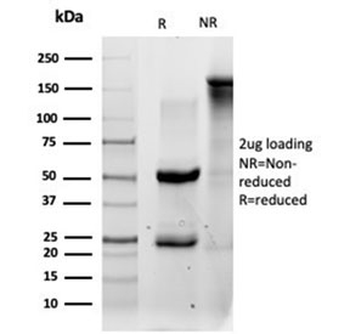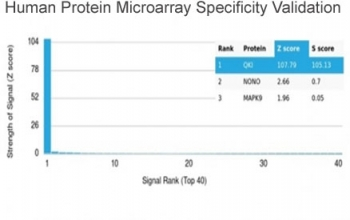You have no items in your shopping cart.
QKI Antibody / Protein Quaking
Catalog Number: orb2634781
| Catalog Number | orb2634781 |
|---|---|
| Category | Antibodies |
| Description | QKI, also known as HKQ, QK, QK3 or quaking, is a 341 amino acid protein that localizes to both the cytoplasm and the nucleus and contains one KH domain. Expressed in the frontal cortex of the brain, QKI functions as an RNA-binding protein that plays an important role in myelinization and specifically binds to the RNA core sequence 5. Additionally, QKI regulates pre-mRNA splicing, and mRNA export and is involved in protecting and promoting the stability of select mRNAs. QKI may be methylated by PRMT1 and may also be phosphorylated at its C-terminus, an event that decreases QKI mRNA-binding affinity. Defects or deletions in the gene encoding QKI are associated with astrocytic tumors and may be involved in the pathogenesis of schizophrenia. Multiple isoforms of QKI exist due to alternative splicing events. |
| Species/Host | Mouse |
| Clonality | Monoclonal |
| Clone Number | PCRP-QKI-2F10 |
| Tested applications | ELISA, FACS, IF, WB |
| Reactivity | Human |
| Isotype | Mouse IgG2c |
| Immunogen | Recombinant full-length human protein was used as the immunogen for the QKI antibody. |
| Dilution range | ELISA (concentration assay dependent,Flow cytometry: 1-2ug/million cells,Immunofluorescence: 1-2ug/ml,Western blot: 1-2ug/ml |
| Conjugation | Unconjugated |
| Formula | 1 mg/ml in 1X PBS; BSA free, sodium azide free |
| Hazard Information | This QKI antibody is available for research use only. |
| UniProt ID | Q96PU8 |
| Storage | Maintain refrigerated at 2-8°C for up to 2 weeks. For long term storage store at -20°C in small aliquots to prevent freeze-thaw cycles. |
| Note | For research use only |
| Application notes | Optimal dilution of the QKI antibody should be determined by the researcher. |
| Expiration Date | 12 months from date of receipt. |

Immunofluorescent staining of PFA-fixed human MCF7 cells using QKI antibody (green, clone PCRP-QKI-2F10) and phalloidin (red).
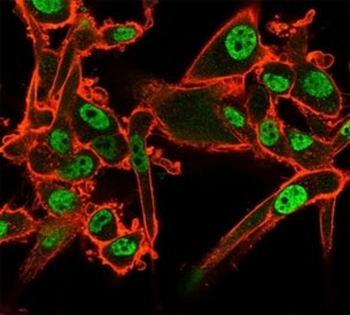
Immunofluorescent staining of PFA-fixed human U-87 MG cells using QKI antibody (green, clone PCRP-QKI-2F10) and phalloidin (red). Staining is localized to the nucleoplasm.
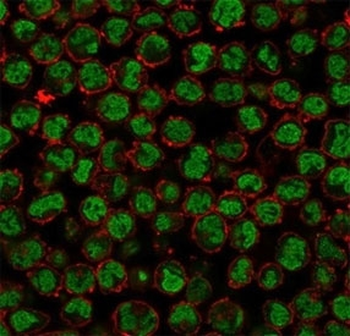
Immunofluorescent staining of human K562 cells using QKI antibody (green, clone PCRP-QKI-2F10) and phalloidin (red).
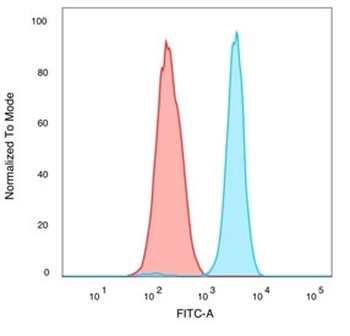
FACS staining of PFA-fixed human K562 cells with QKI antibody (blue, clone PCRP-QKI-2F10) and isotype control (red).
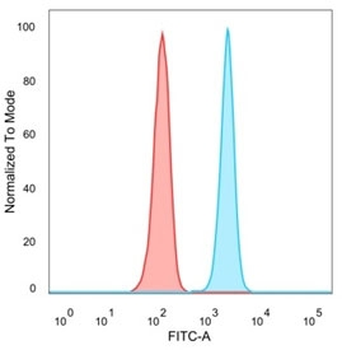
FACS staining of PFA-fixed human HeLa cells with QKI antibody (blue, clone PCRP-QKI-2F10) and isotype control (red).
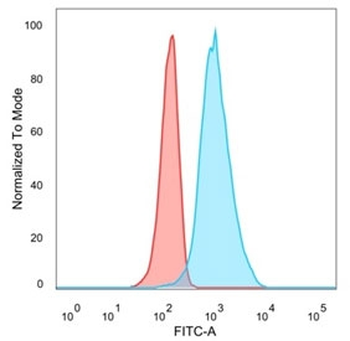
FACS staining of PFA-fixed human U-87 MG cells with QKI antibody (blue, clone PCRP-QKI-2F10), and isotype control (red).
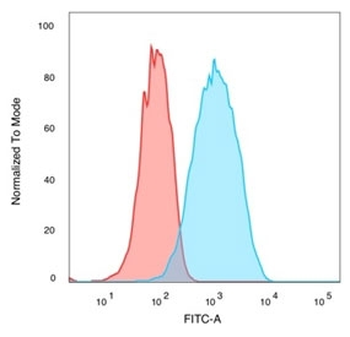
FACS staining of PFA-fixed human MCF-7 cells with QKI antibody (blue, clone PCRP-QKI-2F10), and isotype control (red).
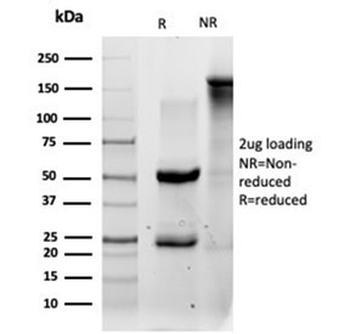
SDS-PAGE analysis of purified, BSA-free QKI antibody (clone PCRP-QKI-2F10) as confirmation of integrity and purity.
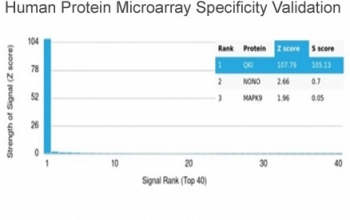
Analysis of HuProt (TM) microarray containing more than 19000 full-length human proteins using QKI antibody (clone PCRP-QKI-2F10). These results demonstrate the foremost specificity of the PCRP-QKI-2F10 mAb. Z- and S- score: The Z-score represents the strength of a signal that an antibody (in combination with a fluorescently-tagged anti-IgG secondary Ab) produces when binding to a particular protein on the HuProt (TM) array. Z-scores are described in units of standard deviations (SD's) above the mean value of all signals generated on that array. If the targets on the HuProt (TM) are arranged in descending order of the Z-score, the S-score is the difference (also in units of SD's) between the Z-scores. The S-score therefore represents the relative target specificity of an Ab to its intended target.
QKI Antibody / Protein Quaking [orb2634782]
ELISA, FACS, IF, WB
Human
Mouse
Monoclonal
Unconjugated
20 μgQKI Antibody / Protein Quaking [orb2634783]
ELISA, FACS, IF, WB
Human
Mouse
Monoclonal
Unconjugated
100 μg



